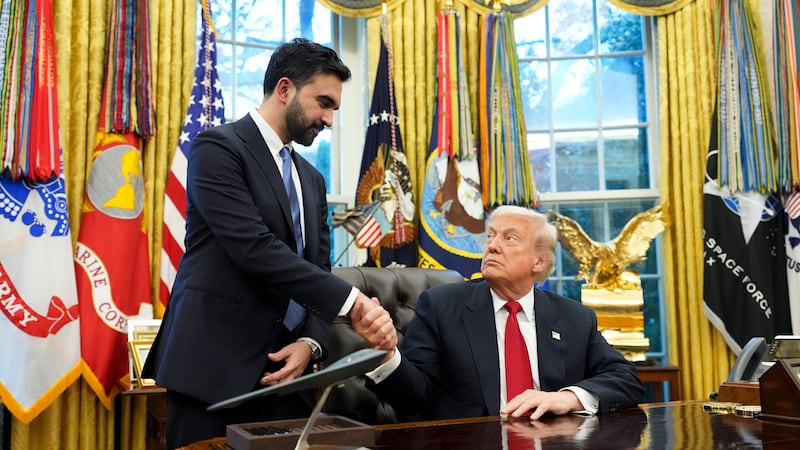A week ago, the White House declared that ordering a US aircraft carrier into the Sea of Japan would send a powerful deterrent signal to North Korea and give President Donald Trump more options in responding to the North's provocative behaviour.
“We’re sending an armada,” Mr Trump said to Fox News that afternoon.
The problem was that the carrier, the Carl Vinson, and the three other warships in its strike force were that very moment sailing in the opposite direction, to take part in joint exercises with the Australian navy in the Indian Ocean, 5,600km southwest of the Korean Peninsula.
White House officials said on Tuesday that they had been relying on guidance from the defence department. Officials there described a glitch-ridden sequence of events, from an ill-timed announcement of the deployment by the military's Pacific command to an erroneous explanation by defence secretary Jim Mattis – all of which perpetuated the false narrative that a flotilla was racing toward the waters off North Korea.
By the time the White House was asked about the Carl Vinson, its imminent arrival had been emblazoned on front pages across East Asia, fanning fears that Mr Trump was considering a pre-emptive military strike. It was portrayed as further evidence of the president's muscular style days after he ordered a missile strike on Syria while he and President Xi Jinping of China were chatting over dessert during a meeting in Florida.
With Mr Trump himself playing up the show of force, Pentagon officials said, rolling back the story became difficult. The saga of the wayward carrier might never have come to light, had the Navy not posted a photograph online on Monday of the Carl Vinson sailing south through the Sunda Strait, which separates the Indonesian islands of Java and Sumatra.
It was taken on Saturday, four days after the White House press secretary, Sean Spicer, described its mission in the Sea of Japan.
Bewilderment
Early on Wednesday, the Carl Vinson was finally on a course for the Korean Peninsula, expected to arrive in the region next week, according to defence department officials. White House officials declined to comment on the confusion, referring all questions to the Pentagon. "Sean discussed it once when asked, and it was all about process," a spokesman, Michael Short, said of Spicer.
Privately, however, other officials expressed bewilderment that the Pentagon did not correct its timeline, particularly given the tensions in the region and the fact that Mr Spicer, as well as the national security adviser, Lt Gen HR McMaster, were publicly answering questions about it.
The miscues began Sunday, April 9th, when the public affairs office of the Navy's 3rd Fleet issued a news release saying that Adm Harry B Harris Jr, the Pacific commander, had ordered the Carl Vinson, a Nimitz-class nuclear-powered carrier, and its strike force – two destroyers and one cruiser – to leave Singapore and sail to the Western Pacific. As is customary, the Navy did not say exactly where the carrier force was headed or its precise mission.
Given the timing, it hardly needed to: Mr Trump had just wrapped up a two-day summit with Mr Xi at his Palm Beach club, Mar-a-Lago, with a message that the United States had run out of patience with North Korea's dictator, Kim Jong Un, and its nuclear and missile programmes.
That Sunday, Mr McMaster told Fox News that the deployment was a “prudent” move, designed to give the president “a full range of options to remove” the threat posed by Mr Kim.
What the Navy did not say was that the Carl Vinson had to carry out another mission before it could set sail north: a long-scheduled joint exercise with the Australian navy in the Indian Ocean. The photo that the Navy posted of the Carl Vinson, bristling with fighter jets as it passed Indonesia, was spotted by Defense News, a trade publication, which broke the news that the ship was thousands of miles away from where the world thought it was.
New York Times














